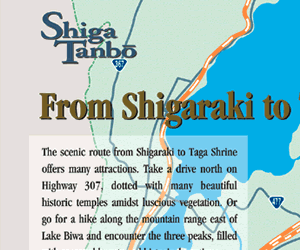
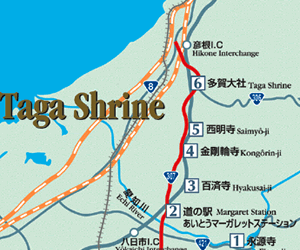
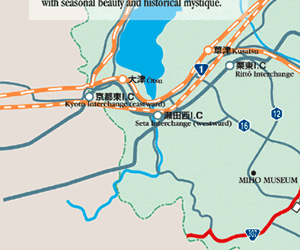
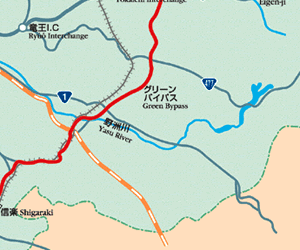
 |
 |
|
 |
 |
| 1 Eigen-ji Temple | ||
| The main temple of the Eigen-ji branch
of the Rinzai Zen sect was founded by the priest Jakushitsu in 1361. At
its height, over two thousand training monks were said to have practiced
here. Climb the stone steps, overlooking the river Echi, and see the sixteen stone arhats to your left. Amidst maple trees, take the path from the outer gate to the temple gate. The central deity, Yotsugi Kannon, is a “hidden image,” who promises posterity. The temple also has many other cultural objects, including a clay image of its founder, Jakushitsu. The specialty produced in this area is konnyaku, a food product Jakushitsu is said to have brought back from China. |
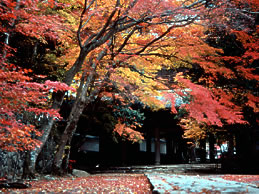 |
|
|
||
| 2 Aitô Margaret Station | ||
| Margaret Station, a popular highway stop, offers a European countryside setting with a restaurant, shops that selling herbs, dried flowers and local produce, and a flower arrangement corner to get hands-on experience. Try the famous gelato at Rapty, a fruit and herb store with homemade cookies and jams. |  |
|
|
||
| 3 Hyakusai-ji Temple | ||
| Hyakusai-ji, also known as Kudara-ji, was built by Prince Shôtoku in 606, modeled on Buddhist monasteries of the ancient Korean kingdom Paekche (Kudara in Japanese). The Eleven Headed Kannon and sutras, said to have been made and copied by the Prince himself, imbue the distinctiveness of this ancient temple. Until the warlord Oda Nobunaga (1534-82) burned down this area, Hyakusai-ji was a large monastic compound. Today, the panoramic view of the Kotô plains, Lake Biwa, and Mt. Hiei from the garden of the main subtemple, Kiken-in, is impressive as ever. | 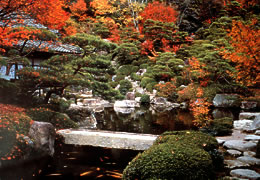 |
|
|
||
| 4 Kongôrin-ji Temple | ||
| This early Tendai temple, located amid
the three peaks in Eastern Lake Biwa, was built in 741, for Emperor Shômu
(reign, 724-49), by the priest Gyôki. At the top of a long set of
steps, protected by one thousand jizô images, appear the National
Treasure main hall and a three-tiered pagoda. In autumn, the maples here
transform into a brilliant crimson. |
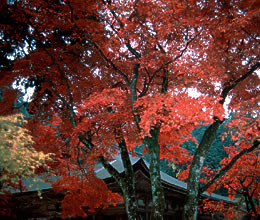 |
|
|
||
| 5 Saimyô-ji Temple | ||
| This Tendai monastery was built in 834,
by the priest Sanshu, for Emperor Ninmyô (reign, 833-50). Enter a
sublime world as you go through its gate and moss garden and come upon the
main hall, surrounded by maple and cherry trees. This temple with an unusual
cypress-bark roof and architectural design, reflecting the Kamakura period,
was the first building to be designated as a National Treasure.
|
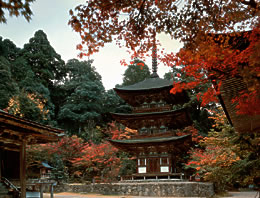 |
|
|
||
| 6 Taga Shrine | ||
| The main hall appears suddenly upon crossing
the arched stone bridge of this famous shrine. “If you can’t go to Ise, visit Taga [Shrine], because Ise is the child of Taga.” Just as the poem reads, Izanagi and Izanami, enshrined at Taga, are the parents of the main Ise deity, the goddess Amaterasu. As the first mythical husband and wife, they brought Japan into being, hence, they are worshipped as gods of longevity and matchmaking. |
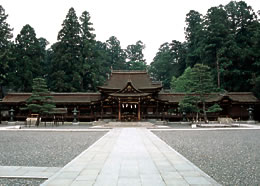 |
|
|
||